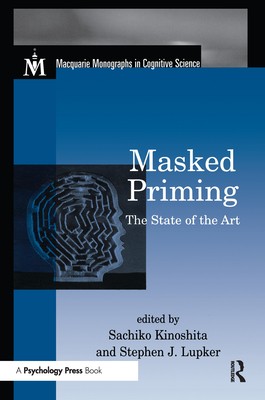
- We will send in 10–14 business days.
- Publisher: Psychology Press
- ISBN-10: 0415649935
- ISBN-13: 9780415649933
- Format: 15.2 x 22.9 x 2 cm, minkšti viršeliai
- Language: English
- SAVE -10% with code: EXTRA
Masked Priming (e-book) (used book) | bookbook.eu
Reviews
Description
Masked priming has a short and somewhat controversial history. When used as a tool to study whether semantic processing can occur in the absence of conscious awareness, considerable debate followed, mainly about whether masked priming truly tapped unconscious processes. For research into other components of visual word processing, however - in particular, orthographic, phonological, and morphological - a general consensus about the evidence provided by masked priming results has emerged. This book contains thirteen original chapters in which these three components of visual word processing are examined using the masked priming procedure. The chapters showcase the advantages of masked priming as an alternative to more standard methods of studying language processing that require comparisons of matched items. Based on a recent conference, this book offers up-to-date research findings, and would be valuable to researchers and students of word recognition, psycholinguistics, or reading.
EXTRA 10 % discount with code: EXTRA
The promotion ends in 22d.03:56:39
The discount code is valid when purchasing from 10 €. Discounts do not stack.
- Publisher: Psychology Press
- ISBN-10: 0415649935
- ISBN-13: 9780415649933
- Format: 15.2 x 22.9 x 2 cm, minkšti viršeliai
- Language: English English
Masked priming has a short and somewhat controversial history. When used as a tool to study whether semantic processing can occur in the absence of conscious awareness, considerable debate followed, mainly about whether masked priming truly tapped unconscious processes. For research into other components of visual word processing, however - in particular, orthographic, phonological, and morphological - a general consensus about the evidence provided by masked priming results has emerged. This book contains thirteen original chapters in which these three components of visual word processing are examined using the masked priming procedure. The chapters showcase the advantages of masked priming as an alternative to more standard methods of studying language processing that require comparisons of matched items. Based on a recent conference, this book offers up-to-date research findings, and would be valuable to researchers and students of word recognition, psycholinguistics, or reading.


Reviews